Catalogue > List by artist
Browse the entire list of Rencontre Internationales artists since 2004. Use the alphabetical filter to refine your search. update in progress
Mathieu K. Abonnenc
Catalogue : 2016Secteur IX B | Fiction | 4k | color | 42:35 | France | 2015
Mathieu K. Abonnenc
Secteur IX B
Fiction | 4k | color | 42:35 | France | 2015
Secteur IX B met en scène la conservation d’une collection anthropologique ramenée la Mission Dakar-Djibouti, une des plus grande opération de collecte coloniale, à travers une relecture de l’ouvrage L’Afrique fantôme de Michel Leiris. Par son dispositif, tourné entre la France et le Sénégal, le film dévoile le destin et la mémoire d`archives par un récit fantasmé, qui désigne un état des relations entre les peuples.
Mathieu Kleyebe Abonnenc s’attache à interroger les formes d’hégémonie culturelle sur lesquelles s’est appuyée l’évolution de nos sociétés contemporaines. Qu’il s’agisse de vidéos, de photographies, d’installations, de dessins ou de projets d’exposition, Mathieu Kleyebe Abonnenc explore les principes de représentation dominants en s’appropriant des éléments et des événements préexistants, principalement liés aux histoires impériales et coloniales des pays dits développés. Autant d’objets appartenant à une mémoire collective dont l’universalisme de principe est mis à l’épreuve depuis plus d’un siècle. Chacun de ces éléments nécessite d’être constamment renégocié afin d’en dégager des problématiques contemporaines, en termes de construction d’une identité, d’une communauté, d’une nation, et ainsi permettre par moment de réinventer l’action artistique et politique. Mathieu Kleyebe Abonnenc est diplômé des Beaux-arts de Marseille en 2002. Il a fait parti du programme de recherche La Seine de l’Ecole Nationale supérieure des Beaux-arts de Paris de 2006 à 2008 . Son travail à fait l’objet en 2013 de deux expositions personnelles, Songs for a Mad King à la Kunsthalle de Bâle, Suisse et Kannibalen au Bielefelder-Kunstverein, Allemagne. En 2012, deux institutions, la Fondation Serralves à Porto au Portugal et Pavilion à Leeds en Angleterre, ont organisé des expositions personnelles de l’artiste. Toujours en 2012 , Mathieu Kleyebe Abonnenc a participé à la Triennale de Paris, Intense Proximité, au Palais de Tokyo, ainsi qu’à des expositions collectives à la Fondation d’entreprise Ricard à Paris et l’ICA – Institue d’Art Contemporain de Philadelphie aux États-Unis.
Yasmine Kabir
Catalogue : 2011The Last Rites | Documentary | dv | color | 17:0 | Bangladesh | 2008
Yasmine Kabir
The Last Rites
Documentary | dv | color | 17:0 | Bangladesh | 2008
` The Last Rites?, a silent film by Yasmine Kabir, depicts the ship breaking yards of Chittagong- a final destination for ships that are too old to ply the oceans any longer. Every year, hundreds of ships are sent to yards in Bangladesh. And every year, thousands of people come to these yards in search of jobs. Risking their lives to save themselves from hunger, they breathe in asbestos dust and toxic waste. The elemental struggle between man and metal figures throughout the film, as men carry the weight of steel ropes over their shoulders, pull huge parts of the vessels inland, and bear great metal plates. ` The Last Rites? is an allegorical portrayal of the agony of hard labor.
Yasmine Kabir is an independent filmmaker based in Bangladesh. Her filmography includes: Death Chant 1992 A day at the Embassy 1996 For Solaiman 1997 A Mother`s Lament (Duhshomoy) 1999 My Migrant Soul (Porobashi Mon Amar) 2000 Direct-Direct (Music Video) 2003 A Certain Liberation (Shadhinota) 2003 The Last Rites (Shesh Kritto) 2008
Jane Jin Kaisen
Catalogue : 2023Halmang | Video | 4k | color | 13:13 | Denmark, Korea, South | 2023
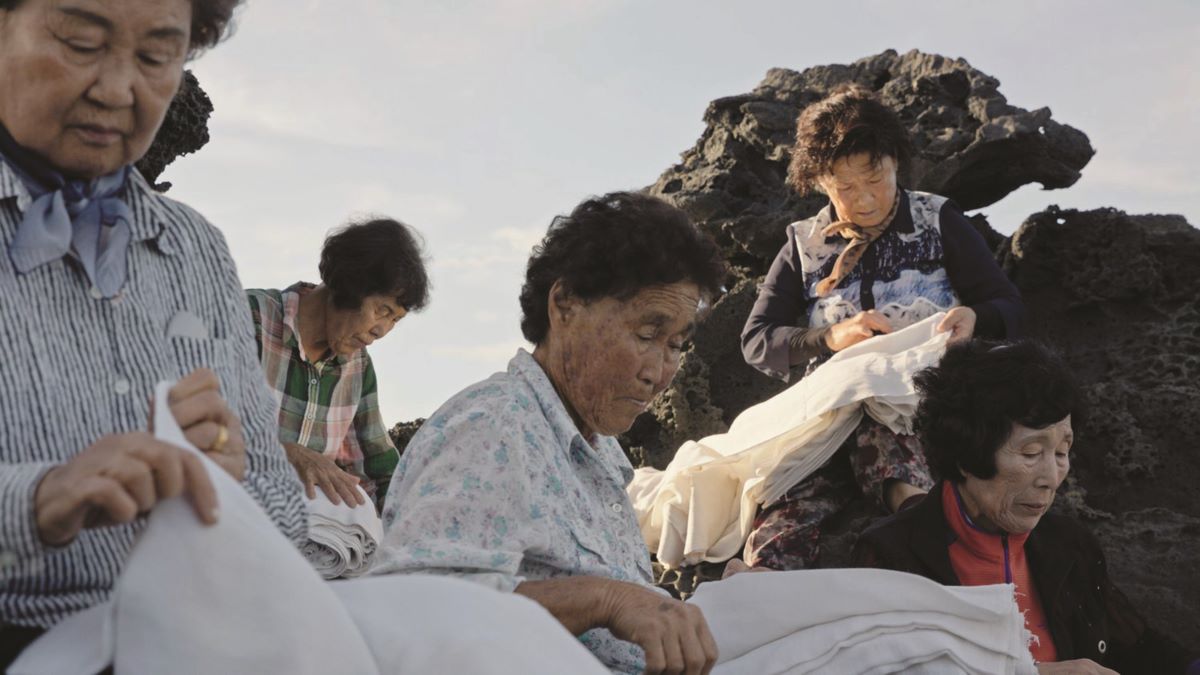
Jane Jin Kaisen
Halmang
Video | 4k | color | 13:13 | Denmark, Korea, South | 2023
Halmang revolves around a group of eight women in their 70s and 80s. It is filmed by the coast of Jeju Island near a lava rock islet that used to serve as a shamanic shrine for the wind goddess Yongdeung Halmang. The women, who have worked and made a living together for most their lives as haenyeo sea divers, used to depart together for the sea from this very location. The title Halmang refers to this spiritual aspect as shamanic goddesses in Jeju are referred to as ‘halmang’ while also being the Jeju term for ‘grandmother’ and a respectful form of address for a woman. It was also from this area that Kaisen’s grandmother during her lifetime used to depart for the sea as a haenyeo sea diver. The film portrays the aging women’s lived experience, their community and spirituality connected to the sea, the wind and the island. Central to the work is its focus on the collective use and care for sochang; a white, long cotton cloth associated with female labor and a symbol of cycle of life and death and humans’ connection to the spirit world. The camera carefully registers their hands, gestures, and facial expressions as they meticulously tend to the fabric. As the piece unfolds, they start connecting the long rolls of sochang until it comes to form a large spiral enveloping the black lava rocks. The music is produced by Lior Suliman (also known as Dub Mentor) and is comprised of layers of on-site recordings, looped, interleaved and treated to create an immersive sound experience. It also features The Song of the Haenyeos by Gang Gyung Ja and Song of Haenyeo Preservation Association.
Jane Jin Kaisen is an artist, filmmaker, and Professor of the School of Media Arts, The Royal Danish Academy of Fine Arts. Spanning the mediums of video installation, experimental film, photography, performance, and text, her work is informed by extensive interdisciplinary research and long-term engagement with minoritarian communities. She is known for her visually striking, multilayered, performative, poetic, and multi-voiced feminist works through which past and present are brought into relation. Engaging topics such as memory, migration, borders, and translation, she activates the field where lived experience and embodied knowledge intersect with larger political histories. Kaisen is a recipient of is a recipient of the New Carlsberg Foundation Artist Grant (2023) and a 3-year work grant from the Danish Arts Foundation (2022) and awarded Exhibition of the Year 2020 by International Association of Art Critics, Denmark for the exhibition Community of Parting at Kunsthal Charlottenborg. She represented Korea at the 58th Venice Biennale and has exhibited and screened her artworks and films in a wide range of contexts internationally.
Jane Jin Kaisen
Catalogue : 2023Burial of this Order | Experimental film | 4k | color | 25:12 | Denmark, Korea, South | 2022

Jane Jin Kaisen
Burial of this Order
Experimental film | 4k | color | 25:12 | Denmark, Korea, South | 2022
A procession of non-conforming people – from musicians, artists and poets to anti-miliary activists, environmentalists and diasporic, queer and trans people – carry a coffin together through the ruins of what turns out to be an abandoned resort on the South Korean island of Jeju. It soon becomes clear that this is no traditional Confucian funeral. Age and gender roles are subverted, the coffin is draped in dark camouflage colours and the traditional portrait of the deceased is replaced by a black mirror. In the field between funeral ritual, political protest and carnival performance, the people in the procession who have come together to undo a world order built upon hierarchy and division, march through the ruins of capitalist modernity. Time and place begin to lose their stability as mythical Dokkaebi deities pass through the building and heavy rain and wind blow through its cavities. As if possessed the group, in a moment of revolutionary fervour, overthrows and dismantles the scaffolding of the prevailing order and other stories begin to take form. Jane Jin Kaisen’s interdisciplinary work not only activates Jeju’s violent history as a site of oppression and rebellion, but is a work with universal power.
Jane Jin Kaisen (born 1980 in Jeju Island, lives in Copenhagen) is a visual artist, filmmaker, and Professor of the School of Media Arts, The Royal Danish Academy of Fine Arts. Spanning the mediums of video installation, narrative experimental film, photographic installation, performance, and text, Kaisen’s artistic practice is informed by extensive interdisciplinary research and engagement with diverse communities. She is known for her visually striking, multilayered, performative, poetic, and multi-voiced feminist works through which past and present are brought into relation. Engaging topics such as memory, migration, borders, and translation, she activates the field where lived experience and embodied knowledge intersect with larger political histories. Through multi-year projects and collaborations, she has engaged topics such as transnational adoption, the Korean War and division, the Jeju April Third Massacre, and Cold War legacies. Another recurring focus revolves around nature and island spaces, cosmologies, feminist re-framings of myths, and engagement with ritual and spiritual practices. Working from the thresholds of mediums and forms, disciplines and sensibilities, her works negotiate and mediate the means of representation, resistance, and recognition, thus contouring alternative genealogies and sites of collective emergence. Kaisen is a recipient of the New Carlsberg Foundation Artist Grant (2023) and a 3-year work grant from the Danish Arts Foundation (2022). She represented Korea at the 58th Venice Biennale with the film installation Community of Parting (2019) alongside artists Hwayeon Nam and siren eun young jeong in the exhibition History Has Failed Us, but No Matter curated by Hyunjin Kim. She was awarded “Exhibition of the Year 2020” by AICA - International Association of Art Critics, Denmark for the exhibition Community of Parting at Kunsthal Charlottenborg. Kaisen has participated in the biennials of Liverpool, Gwangju, Anren, Jeju, among others. Recent solo exhibitions include Jane Jin Kaisen: Braiding and Mending at The Image Centre (2023), Of Specters or Returns at Le Bicolore (2023), Currents at Fotografisk Center (2023) Parallax Conjunctures at Museum of Contemporary Art Detroit (2021), Community of Parting at Art Sonje Center (2021) and Kunsthal Charlottenborg (2020). Other recent exhibitions and screenings: Dislocation Blues: Jane Jin Kaisen, Tate Modern (2023), Ceremony (Burial of an Undead World), Haus der Kulturen der Welt (2022), Checkpoint: Border view from Korea, Kunstmuseum Wolfsburg (2022), Unmoored Adrift Ashore, Or Gallery Vancouver (2022). She holds a PhD in artistic research from the University of Copenhagen, Department of Art and Cultural Studies, an MFA in Interdisciplinary Studio Art from the University of California Los Angeles, an MA in Art Theory and Media Art from The Royal Danish Academy of Fine Arts, and she participated in the Whitney Museum of American Art Independent Study Program. Other exhibition and screening venues include: Kunsthal Aarhus, Nikolaj Contemporary Art Center, The National Museum of Photography (DK), Haus der Kulturen der Welt, Berlinale, Kunstmuseum Wolfsburg, Times Art Center, Museum Ludwig, Videonale (DE), Asian Art Museum, Museum of Contemporary Art Los Angeles, Gana Art New York, DePaul Art Museum (USA), ARKO Art Center, Seoul Museum of Art, Incheon Art Platform, Seoul New Media Art Festival, Leeum Samsung Museum of Art, Asia Culture Center, Coreana Museum of Art, DMZ International Documentary Film Festival (KR), Silencio Club, Palais de Tokyo, Foundation Fiminco (FR), Malmö Konstmuseum, Malmö Konsthall, Inter Arts Center, Kalmar Art Museum (SE), Sørlandet Art Museum and Oslo Kunstforening (NO), Finnish Museum of Photography (FN), ParaSite (HK), Kyoto Arts Center, Kyoto Museum of Art, Fukouka Museum of Art, Yamagata International Documentary Film Festival, (JP), Times Museum Guangzhou, Beijing 798 Art Zone (CN), Kaohsiung Museum of Fine Art, Taiwan International Documentary Film Festival (TW), Museum of Contemporary Art and Design (PH), The National Gallery (Indonesia), and Townhouse Gallery (EG).
Leilani Kake
Catalogue : 2012Tino Rangatira Tanga | Documentary | dv | color | 16:6 | New Zealand | 2008

Leilani Kake
Tino Rangatira Tanga
Documentary | dv | color | 16:6 | New Zealand | 2008
Maranga mai Wake up Maranga mai e te iwi Rise up the people O nga hapu Ngapuhi of the families of Ngapuhi Ki a mau, ki a u,ki a pupuri ai be strong,be fixed,hold on ki nga akoranga nui to the larger lessons "My very first memory of my Dad actually has no visual label but is made up of Sound, the warm soundscape of him singing as he strums the guitar, his voice booms over the acoustic harmonies of the strings. His mouth smiles as he sings a verse, his hands strums with vigor. I am safe in his song. On the night of the seventeenth of April 2008 my father Richard Kake passed away in Whangarei Hospital after suffering a massive stroke, he was fifty seven years old." Tino Rangatira Tanga invites the viewer into a sacred space of Love, loss and revelation. "It is a celebration of my relationship with my Father told through deeply intimate experiences strengthened through the musical soundscape that surrounded my Father?s life and death. The process of filming,editing and viewing the footage of my father?s life and untimely death helped me to grieve and in turn heal. Being able to experience and share this work has created moments of personal growth and insight. "
Kia Ora and Warm Pacific Greetings, My name is Leilani Kake, I live in Otara, Manukau City, South Auckland,Aotearoa(New Zealand) and I am a practicing Video Installation Artist of Nga Puhi, Tainui (NZ Maori) and Manihiki (Cook Island) descent. I graduated with the University of Auckland at the Manukau School of Visual Arts with a Bachelor of Visual Arts in 2002 and a Post Graduate Diploma of Fine Arts in 2005. My work transfers documentary footage and the recording of real events into an art context. My projects tend to be highly personal stories dealing with issues of identity and culture, tradition and change. Insight: ?Raising awareness of important issues pertaining to myself, Tangata Whenua(New Zealand Maori) and Pacific people in a way that creates constructive discussion has always been the main focus of my art.?
Kai Kaljo
Catalogue : 2018Isegi nimi on mõnikord sama (Even the Name Is Sometimes the Same) | Video | hdv | color | 1:55 | Estonia | 2017
Kai Kaljo
Isegi nimi on mõnikord sama (Even the Name Is Sometimes the Same)
Video | hdv | color | 1:55 | Estonia | 2017
Among others, Kai Kaljo(1877-1906) lives on in my video "Even the Name is Sometimes the Same"(1877-2017). I don´t know if we are related or not, but does it really matter? The video was made in cooperation with the photo collection of the Tallinn town museum. In the corner of a very old photograph (made in 1877) of the Tallinn Old Town Harbor, there is a person sitting, very tired. For some unknown reason, I was overwhelmed by that person. She (or he) had no idea that photography existed so she never suspected being accidentally captured by someone´s camera, neither did she suspect that, for some reason, she would become so important for somebody after 140 years.
Kai Kaljo is an artist living and working in Tallinn, Estonia. She studied painting at the Estonian Academy of Arts. Since 1997, when she completed her first video "Loser", she mainly works in video. In 2006 and 2017, she used to work at Tallinn University as a professor for contemporary art. Her video work was often described as poetic, social, humorous/tragic. In recent years, she had been working with archival images and texts.
Catalogue : 2006AEG | Experimental video | super8 | color | 1:0 | Estonia | 2005

Kai Kaljo
AEG
Experimental video | super8 | color | 1:0 | Estonia | 2005
Jade Kallio, Remi Vesala
Catalogue : 2025Laava | Video | 4k | color | 15:0 | Finland | 2024

Jade Kallio, Remi Vesala
Laava
Video | 4k | color | 15:0 | Finland | 2024
Lava is a love letter to things that cannot be written about: love, exciting piles of twigs, longing, a disappearing landscape, memories you can’t trust. Either writing hurts, or it is impossible to find the words. Lava is a continuation of the working group’s previous work Magma (2020). Both works deal with human relationships and ecology. The wishes for transformation, non-monogamy and boundless love, which were still partially smouldering under the surface, erupt in Lava, a video dealing with the end of a relationship.??
Jade Kallio is working with a variety of media including experimental cinema, performance and installation art. Their personal and collaborative works mix speculative fiction with everyday life. Kallio's works have been presented at festivals and institutions such as Europian Media Art Festival (2019, 2017), Beursschouwburg Art Center Brussels (2019), Kunsthalle Osnabrueck (2019), International Film Festival Rotterdam (2019, 2017), CCA derry (2016), HAM gallery (2017), Turku Art Museum (2017), Gallery Sinne (2017).
Mumtoz Kamolzoda
Catalogue : 2009Nikoh | Experimental doc. | dv | color | 3:37 | Tajikistan | 2007
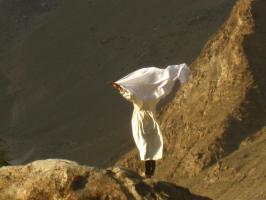
Mumtoz Kamolzoda
Nikoh
Experimental doc. | dv | color | 3:37 | Tajikistan | 2007
On the world`s roof (Pamir) has remained the most ancient ceremony to this day. A woman wants very much to marry, but her husband dies before. The next enamored man is careful to take such woman. She must first marry a tree. The bride, in a specially appointed term, goes to the tree where her relatives prepare the wedding ceremony. While guests have fun, the bride remains with the new spouse-tree for a while. According to customs after such a wedding the person is safe. The woman can marry once again only when the tree drys up. If a tree continues to turn green, the woman marries another tree until her relatives achieve the necessary result. By means of ancient ceremonies the woman is released from a bad aura.
Mumtoz Kamolzoda born in 1987 in Tajikistan. Educational background:2008-2009 University of Delhi, major: Indian culture.2006-2007 Beijing University of Language and Culture,major: Chinese language.2003-2008 Russian-Tajik Slavonic University,major: Linguistic and intercultural communication.1996-1999 Art School by M. Olimov Major:painting. Working Experience:2007-2008 ? Teacher of Chinese language, Russian-Tajik Slavonic University.2005-2006 ? Correspondent and photographer, Tajik Society of Friendship and Cultural Relations.2003-2008 ? editor, Department of Cultural Programs, Tajik Television. Languages: Tajik- fluent Russian- fluent English ? fluent Chinese ? fluent German ? read and translate with dictionary French ? read and translate with dictionary Hindi ? read and translate with dictionary Seminars: Seminar ?Museum exposition: modern practice and possibilities? Tajikistan 2007 Seminar ?Role of curator in contemporary art process? Tajikistan 2008 Seminar ?Modern art history? Tajikistan 2008 Web-site: www.mumtoz.blogspot.com
Behnam Kamrani
Catalogue : 2009endurance | | dv | color | 3:44 | Iran | 2006
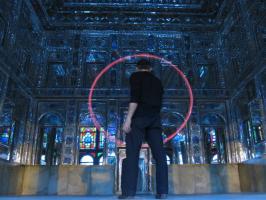
Behnam Kamrani
endurance
| dv | color | 3:44 | Iran | 2006
A room in a Qajarid house of a woman (Zinat-ul-Molk). A mirror-work room shining at night like a starry sky. Despite its ambiguity, the relationship between the man and woman in the room indicates tensions after separation. The woman in white can also be considered as a spirit or as the tension that remains after the turnings and burnings.
Born in 1968 Shiraz/ Iran Education 1995 B.A/ Painting/ Fine Arts/ Tehran university 1999 M.A / Painting/ Art University PhD/ Art research/ Art University
Bidzina Kanchaveli
Catalogue : 20087 ½ Frauen | Experimental fiction | 16mm | color | 9:30 | Georgia, Germany | 2005
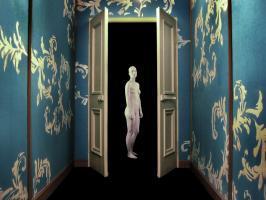
Bidzina Kanchaveli
7 ½ Frauen
Experimental fiction | 16mm | color | 9:30 | Georgia, Germany | 2005
One by one, Seven women, all naked and deathly pale, desire to enter the claustrophobic world of a man who has just enough space for himself and a goose. Lovingly, unsecurely swaying or dancing they try in vain to reach the toilet, while the man seems to despair of this female intrusion.
Bidzina Kanchaveli was born in 1974 in Kutaisi, Georgian. He lives in germany since 2000. At the age of 20 he successfully staged his first play ?At first was the word?. Then Followed 4 other Theaterstaging, which received public acknowledgement. In 1999 he realised his first short film ?Novice No21?, which found an impressive resonance on numerous European film festivals and among other things was distinguished on the Noir Film festival in Rome as the best short film. Besides, "Novice No21" was the Georgian contribution to the Academy Awards 2000. On an invitation of the Ludwigsburg film school (Germany), SWR Channel and arte, he realized his next short film ?7½ women?. Now Kanchaveli works on his next project, a science-fiction feature film about a mankind, which live behind Homo sapiens after, undergone a new step in the evolution.
Diane Kaneza
Catalogue : 2025Ubuntu | Documentary | hdv | color | 34:0 | Burundi | 2023
Diane Kaneza
Ubuntu
Documentary | hdv | color | 34:0 | Burundi | 2023
In the heart of Burundi, rivalries and ethnic extremism have caused thousands of deaths since independence. Amidst the murderous madness we have endured, there have been those who protected life. At the risk of their own lives, they hid and protected friends and neighbours from other ethnic groups.
For 15 years, Diane KANEZA has been combining cinema, audiovisual communication and journalism. Passionate about images, she uses them to tell stories from her homeland. She graduated with a Master's degree in Creative Documentary Film, producing the film ‘Mon Identité’ (My Identity). This work encapsulates all her expertise in documentary filmmaking and her ability to create from real life. She co-founded and has directed the communications agency MIKADIE Production since 2012, which produces institutional/auteur films and communication tools. She was in charge of programming for the Burundi International Film and Audiovisual Festival from 2013 to 2015 and was the festival's director in 2016. Since 2020, she has combined the production of audiovisual and cinematographic works with the management of the television channel ‘Burundi News Publication Television’ (BNP TV). Communicating and sharing have always been her leitmotif through the magazines Événement Culturel de la Semaine, Bonne réponse and Notre Terre, Notre Héritage, which she developed while working for National Television from 2006 to the end of 2011 as a TV producer and presenter. A visiting professor at two universities in Bujumbura (Université Lumière de Bujumbura and Université du Lac Tanganyika), she teaches Documentary Production in the Faculty of Communication Sciences, specialising in communication and audiovisual design.
Shiho Kano
Catalogue : 2006Wave | Art vidéo | dv | color | 18:0 | Japan | 2005

Shiho Kano
Wave
Art vidéo | dv | color | 18:0 | Japan | 2005
Numinous tracings of beautiful light on the sea, augmented by the artifice of video.
Born 1974, Tokyo, Japan. Graduate from Musahino Art University (Tokyo, Japan) in 1997. Studied at the institute of Image Forum in 1997-1999. Making films, video and video installations since 1996.
Gautam Kansara
Catalogue : 2008Grandma, Gautam, and Ghalib | Art vidéo | dv | color | 8:12 | United Kingdom, USA | 2006
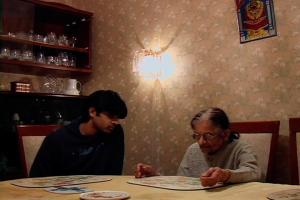
Gautam Kansara
Grandma, Gautam, and Ghalib
Art vidéo | dv | color | 8:12 | United Kingdom, USA | 2006
In Grandma, Gautam, and Ghalib, the artist?s Grandmother translates classic Hindi and Urdu love songs. Using the first person to utter a passionate rendition of the lyrics, she often addresses Gautam as though he were her lover, weaving together the realities of memory and lived experience. The viewer bears witness to an emotional outpouring of love and loss where the boundaries of fiction and reality become blurred, confused and ultimately irrelevant.
Gautam Kansara was born in London in 1979 and is currently based in New York. His Videos and Photographs have been shown at the Centro Nacional de las Artes in Mexico City, The Bronx Museum of the Arts, the Rotterdam Film Festival, Platform Garanti in Istanbul, Smack Mellon Gallery and Goliath Visual Space in Brooklyn, The Museo Nacional de Arte in La Paz, Bolivia, Gallery Demain and Dukwon Gallery in Seoul, Korea, and LMAK Projects in Manhattan among others. In 2006 Gautam was a Fellowship Artist at Smack Mellon in Brooklyn, and also received a Swing Space award from the Lower Manhattan Cultural Council. Most recently Gautam was awarded a solo exhibition from Real Art Ways in Hartford, Connecticut as part of their GO! series that will be on view in 2008. Gautam is also a faculty member at Manhattan College?s Department of Fine Arts teaching Digital Photography and Video Art.
Catalogue : 2007I'm Leaving | Experimental video | dv | color | 5:51 | United Kingdom | 2005
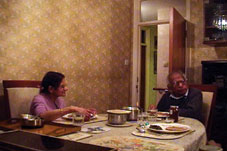
Gautam Kansara
I'm Leaving
Experimental video | dv | color | 5:51 | United Kingdom | 2005
"I'm Leaving" revolves around the fusion of humour and sentiment as the viewer is confronted with the repeated perspective of Gautum Kansara's Grandfather, who goes on and on stating his displeasure, disbelief, and pain concerning Kansara's impending departure. Having greater and greater difficulties hearing, his grandfather's is very much stuck in his own world, engulfed in a cycle of his inability to come to terms with the inevitable. Seemingly good intentions turn confused and irrational, and highlight the eccentricities of family.
Gautam Kansara was born in London in 1979 and is currently based in New York. His videos and photographs have been shown at the Bronx Museum of the Arts, the Rotterdam Film Festival, Platform Garanti in Istanbul, Goliath Visual Space in Brooklyn, The Museo Nacional de Arte in La Paz, Bolivia, Gallery Demain and Gallery The Space in Seoul, Korea, and Transplant Gallery in Manhattan, among others. Most recently Gautam's video work has been included as part of the inaugural exhibition of Mumbo Jumbo Gallery in New York City. Gautam is also a faculty member at New York University's Department of Art and Art Professions.
Eginhartz Kanter
Catalogue : 2026misdirected impulse | Experimental film | 16mm | color | 2:50 | Germany, Austria | 2025
Eginhartz Kanter
misdirected impulse
Experimental film | 16mm | color | 2:50 | Germany, Austria | 2025
Misdirected Impulse shows deserted natural and park landscapes in long, static shots. Picturesque arrangements of trees and bushes unfold quietly, until the sudden appearance of a smoking light ruptures the calm. The following staccato of short shots, in which the light is directed equally at the camera and the viewer, is an attack on gaze and perspective, dissolving romanticized notions of nature.
Eginhartz Kanter (*1984, Leipzig) studied Fine Arts, Cultural Studies and Photography at the University of Arts and Design Linz, the Academy of Fine Arts Vienna and the E?cole Nationale Superieure des Beaux-Arts in Lyon. In his artistic approach he questions the boundaries and conventions of everyday life and living environments. His (sub)urban interventions negotiate aspects of the public and often have a direct relation to architecture. Previous films: Conveyor (2025); Prelude (2022); Taking Away (2018); Aufstieg (2016); Transient II (2013) Downloads
Payal Kapadia
Catalogue : 2019And What is the Summer Saying | Experimental doc. | hdv | color and b&w | 23:0 | India | 2018
Payal Kapadia
And What is the Summer Saying
Experimental doc. | hdv | color and b&w | 23:0 | India | 2018
Namdeo has learnt to live off the forest from his father. He stares at the treetops, searching for honey. The wind blows and afternoon descends on the small village by the jungle. Women of the village, whisper little secrets of their lost loves. Never seen, and only heard. A strange smoke emits from the ground, like a dream of a time gone by.
Payal Kapadia is a Mumbai based filmmaker and artist. She studied Film Direction at the Film & Television Institute of India. Her work deals with that which is not easily visible, hidden somewhere in the folds of memory and dreams. It is between minor, ephemeral feminine gestures where she tries to find the truth that makes up her practice. Her much acclaimed short film Afternoon Clouds was India’s sole official selection in Cannes film Festival, 2017. This year, her experimental short And what was the Summer Saying had its world premiere at the prestigious Berlin International Film Festival (2018). It also received the prestigious Special Jury Prize at the International Documentary Film Festival of Amsterdam (2018). Kapadia’s experimental short The Last Mango Before Monsoon was premiered at Oberhausen International Film Festival (2015), where she was awarded FIPRESCI award and Special Jury Prize. The film got her acclaims around the world including awards like Best Film and Best Editing at Mumbai International Film Festival (2016), Toto Award for Young Indian Artist, and Special Mention at Filmadrid.
Maria Kapajeva
Catalogue : 2023The Enforced Memory | Video | 0 | color | 13:0 | Estonia | 2023
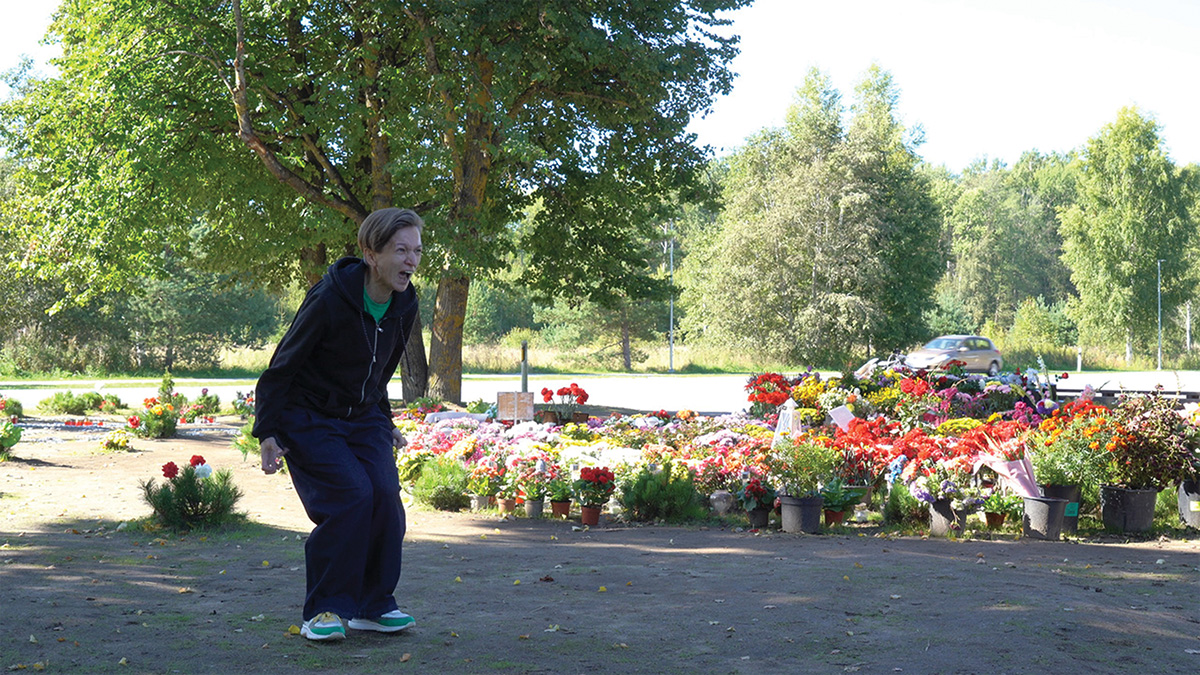
Maria Kapajeva
The Enforced Memory
Video | 0 | color | 13:0 | Estonia | 2023
The video is an artist’s momentary personal reaction on the events of August 2022, which took place in Estonia, in Narva, Maria’s home town. Since the war in Ukraine escalated, the removal of Soviet monuments in Estonia became intensively debated topic followed by the government’s decision to demolish any Soviet attributes and monuments from the public spaces. The tank monument in Narva became a stumbling block between the views of different communities within the country. It has especially became symbolic and problematic because it stood right at the border with Russia, on a riverbank of Narva river, facing Estonia. In the final scene the artist stands on that riverbank facing Russia. As Kapajeva grew up on that border, she felt an urge to speak up about the situation with the monument. As the artist states, the video helped her not just to scream out everything what accumulated for the first half a year of the war, but, also, it helped her to regain meaningfulness in her own art practice that she lost since the full invasion of Ukraine by Russia.
Born in the Soviet Union, raised in an independent Estonia and educated in the UK, Maria Kapajeva has found herself in an involuntary position of ‘the other’ everywhere. A position, she has embraced and employs as datum in her artistic practice, leads her to explore a diverse spectrum of cultural identity and gender issues within historical and contemporary contexts. Being originally from a borderland region, border within postcolonial and post-Soviet geopolitical conditions becomes to be the core in her work. She uses various mediums, such as video, photography, textile and installations, to bring to the focus what is often left invisible or stays in peripheral vision. Kapajeva’s works exhibit internationally including some of the solo exhibitions at Estonian National Archive (2013), Estonian Museum of Art KUMU (2022), Finnish Museum of Photography (2021), Lithuanian Gallery of Photography (2020) and Tallinn Art Hall (2020). Her video works were screened at various venues and festivals including Art Viewer (2023, Spain), VAFT: Visual Art Festival (2020, Finland), Luminocity Video Art Festival (2018, Canada), Berlin Feminist Film Week (2017, Germany) and others. Her video work ‘Test Shooting’ received Runner-Up Award at FOKUS Video Art festival (2018, Denmark). Kapajeva is a member of Estonian Artists’ Association.
Philippos Kappa
Catalogue : 2007A-05 | Art vidéo | dv | black and white | 0:44 | Greece | 2006

Philippos Kappa
A-05
Art vidéo | dv | black and white | 0:44 | Greece | 2006
In the video A-05 the artist worked with the footage from a home video filmed in a coffee shop, when a kamikaze blew himself up. The images before and after the explosion were removed, only the sound being kept, and presenting only the crucial seconds of the explosion. Like a lamp that suddenly turns on and off in the dark, like a flash.
Philippos Kappa was born in 1977 in Athens, Greece. He earned a B.A in Fine Art from Middlesex University, London, England in 1999, and a M.A in Fine Art from Central Saint Martins College of Art and Design, London, England in 2000.
Christophe Karabache
Catalogue : 2012Wadi khaled | Experimental doc. | super8 | color | 15:0 | France, Lebanon | 2008

Christophe Karabache
Wadi khaled
Experimental doc. | super8 | color | 15:0 | France, Lebanon | 2008
Jason Karaïndros
Catalogue : 2008Figures | Experimental video | dv | color | 4:0 | Greece, France | 2007

Jason KaraÏndros
Figures
Experimental video | dv | color | 4:0 | Greece, France | 2007
Synopsis Figures Dans ?Figures? on assiste à une danse de silhouettes qui évoluent lentement dans un espace dont les repères se perdent dans la brume de sable et de poussière du Sahara mauritanien. Des gamins s?agitent ; ils apparaissent et disparaissent du cadre sans nous dévoiler vraiment la raison de leur présence ou de leur rencontre. Vont-ils quelque part ? s? amusent-ils ? se disputent-ils ? ou jouent-ils tout simplement une pièce de théâtre d?ombres? Jason Karaïndros 2007
Né en 1963 à Athènes, il vit et travaille à Paris. Il a étudié l'art à l'E.N.S.B.A. de Paris dans l'atelier multimédia de Piotr Kowalski et il est également diplômé de l'École du Louvre où il a suivi une formation en histoire de l'art. Jason Karaïndros a obtenu de nombreux prix, bourses et commandes publiques, et plusieurs de ses ?uvres ont été acquises par de importantes institutions (Fond national d'art contemporain, Cité des sciences et de l'industrie, FRAC Haute Normandie). Durant cette dernière décennie, il a réalisé plusieures expositions personnelles et a participé à un grand nombre d'expositions collectives à travers le Monde (Kunstmuseum, Bergen, Norvège ; Reykjavik Art Museum, Island ; Centre d'Art Contemporain, Bunkamura, Tokyo, Japon ; Centre d'Art Contemporain de Sète ; Musée des Arts Décoratifs, Paris ). Plusieurs publications rendent compte de son travail (dont le catalogue personnel " Take Your Time ", Éd. De la Direction des Affaires Culturelles de la Mairie de Paris, textes St. Carrayrou et D. Truco, 2001). Son intérêt pour une pratique artistique prenant largement en compte les domaines de la science et de la technologie l'a amené à travailler avec les techniques multimédias et à enseigner depuis 5 ans à l'École Régionale des Beaux-Arts de Rouen.
Irini Karayannopoulou
Catalogue : 2011immaterial: 1 film 22 soundtracks | Animation | dv | color and b&w | 2:0 | Greece | 2010
Irini Karayannopoulou
immaterial: 1 film 22 soundtracks
Animation | dv | color and b&w | 2:0 | Greece | 2010
In Immaterial, sharp angled stars, magicians? hats and supernatural landscapes transform perpetually into fantastic abstractions. Based entirely on works on paper, IK s manic animation reveals disparate elements thrown together as if they were meant to be. Like a vision emerging from the mist, this dazed mix of enigmatic scenes engages the spectator in a particularly addictive way. The film s aggressively seductive, constantly changing forms can be compared to a succession of suspended dreams. Yannis Saxonis? music (1 film, 22 soundtracks) envelopes into a familiar yet surprisingly improbable environment with its own unique, undefined logic. As well as, it determines and transforms in a mysterious, almost alchemical way, the impact of images, enriching it at the same time with a metaphysical notion; -as if it was all exercised in a cosmic dimension, in 22 different ways.
Irini Karayannopoulou (born 1973 in Thessaloniki) lives and works in Athens, Greece. Her work consists of video animation, painting, drawings and music (that is, of course, when Yannis Saxonis -who composes the music for most of her video works- allows her to. IK is represented by Ileana Tounta Contemporary Art Center and Lola Nikolaou gallery.
Catalogue : 2008Boys | Animation | dv | color | 3:45 | Greece | 2007

Irini Karayannopoulou
Boys
Animation | dv | color | 3:45 | Greece | 2007
For her video BOYS, Irini Karayannopoulou sticks to her Old -Skool- DIY- Drawings- Only- Animation- Method in an attempt to illustrate her own cover version of Sabrina s 80 s hit "Boys". In the video, the heroine,- a little girl with a murderous desire for love- drinks cocktails in a swimming pool, takes her bikini off, rides a crocodile, wets her 18 th century bed, flirts with super hero Joseph Beuys and after all "she`s looking for a good time..."A copy of BOYS was stolen during Athens Artfair, most probably by a group of ultra conservative let`s say art lovers who were extremely shocked by its content.....
Irini Karayannopoulou is a visual artist;she studied Fine Arts in Saint Etienne, France. Her work has been shown in solo shows and major art fairs in Greece, Italy, France, Germany, Sweden, Switzerland, Egypt, USA... She lives and works in Athens and Skopelos island.
Irini Karayannopoulou
Catalogue : 2007My room | Animation | dv | color | 2:27 | Greece | 2006

Irini Karayannopoulou
My room
Animation | dv | color | 2:27 | Greece | 2006
I sing and I shout and I do what I want in the haven of my room this is my room its fascinating treasures would seduce you sucker this is my room and I won't let you in.
Irini Karayannopoulou lives and works in Athens, Greece.